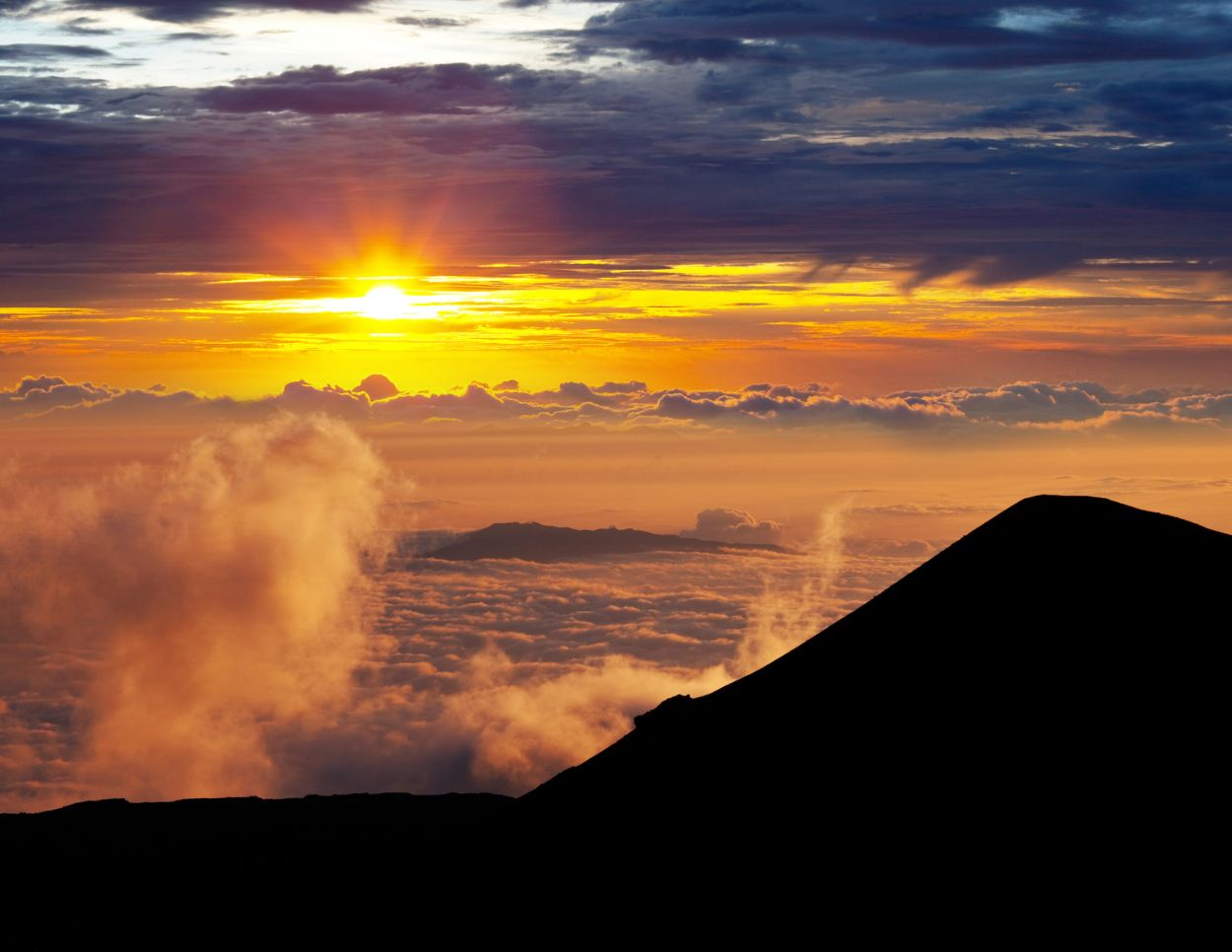Haleakala is a massive shield volcano located on the island of Maui in Hawaii. It is one of the most popular attractions on the island, drawing thousands of visitors each year to witness its breathtaking beauty and unique landscape. In this blog post, we’ll explore the history, geology, and activities associated with the Haleakala volcano.
Historical Significance of the Volcano
Haleakala, with its age ranging between 1 to 1.5 million years, stands as one of the ancient volcanoes gracing the Hawaiian archipelago. Its name, “Haleakala,” translates to “house of the sun” in the Hawaiian language, symbolizing its revered stature among the natives. Hawaiian legends narrate tales of the demigod Maui, who is believed to have ensnared the sun atop this very volcano, thereby extending the daylight hours.
Geological Wonders: Beautiful Views
Classified as a shield volcano, Haleakala boasts a wide, subtly inclined silhouette crowned with a flat peak. Towering over 10,000 feet above the ocean’s surface, it ranks among Hawaii’s loftiest landmarks. The volcano’s apex cradles a vast caldera, a cavernous depression sculpted by the subsidence of the summit.
Adventures Await on Haleakala Volcano
Haleakala’s summit is a sought-after vantage point for both sunrise and sunset enthusiasts. While an early morning permit is mandatory for sunrise gazers, the ethereal sight of dawn breaking over the crater is well worth the effort. As day turns to dusk, the setting sun paints the sky in myriad hues, casting a magical spell.
For trekking aficionados, Haleakala presents trails like the Halemau’u and Sliding Sands, meandering through its distinctive terrains, from lava remnants to cinder cones. For thrill-seekers, downhill biking from the summit offers an adrenaline-pumping ride, though caution is advised given the steep descents and hairpin bends.
Nature lovers can revel in Haleakala’s endemic biodiversity. The park shelters species exclusive to its slopes, like the endangered Haleakala silversword plant. Birdwatchers can spot native birds like the Hawaiian petrel and the Maui parrotbill.
Planning Your Visit
To experience Haleakala’s sunrise, prior permit acquisition is essential. The park, accessible all week round, 24/7, charges an entry fee. Facilities within include camping spots, washrooms, and picnic zones.
When packing for Haleakala, anticipate cooler temperatures at the summit, averaging between 40 to 60 degrees Fahrenheit. Layered clothing, protective sunscreen, and shades are recommended essentials.
Haleakala, Maui’s iconic volcano, offers a blend of history, geology, and adventure. From sunrise spectacles and hiking escapades to downhill biking thrills, it promises a myriad of experiences. A visit here is not just a journey through its trails but a deep dive into the heart of Hawaiian splendor.

